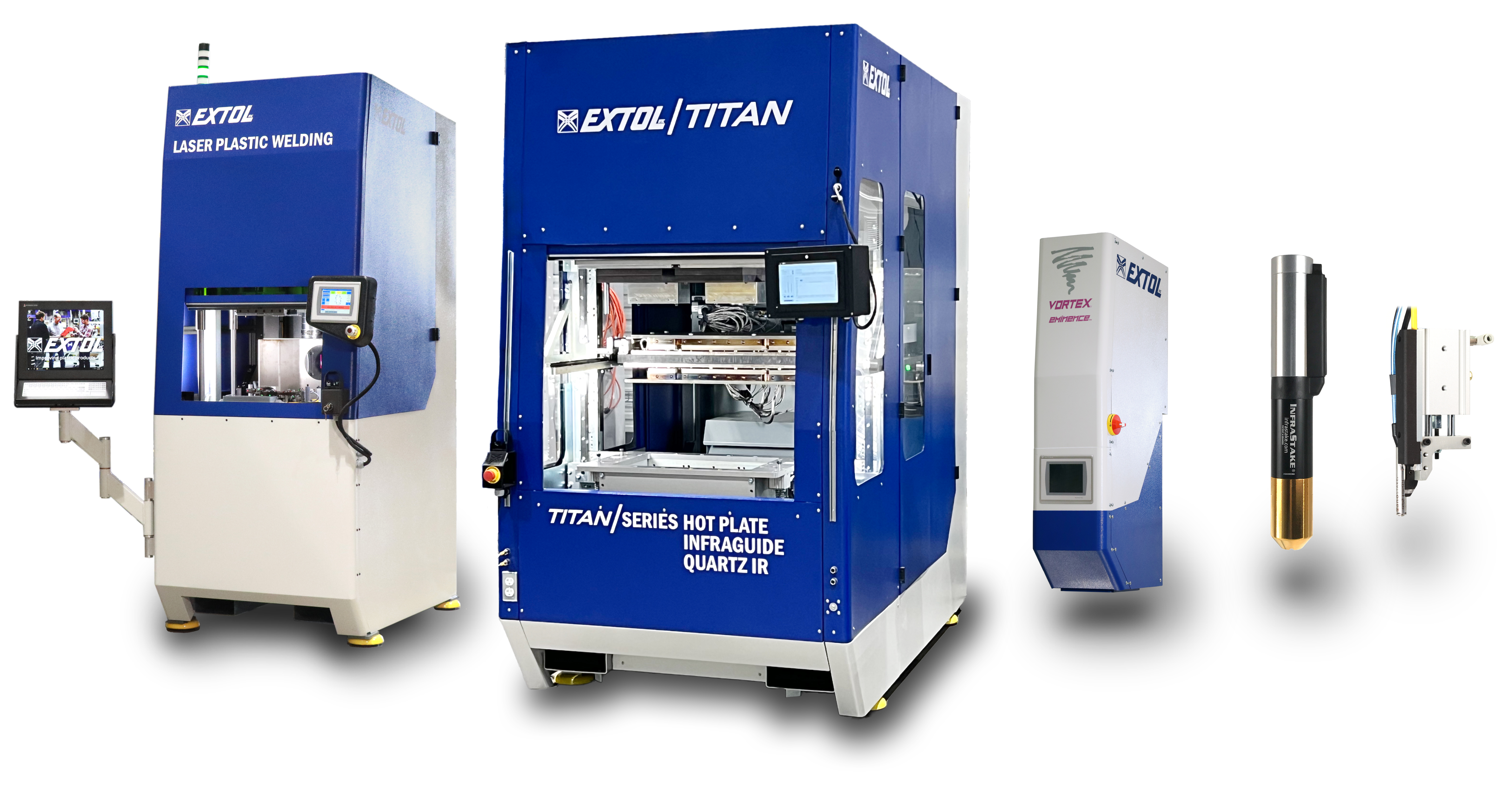The Ultimate Plastic Welding Webinar
Published by
Jason Dornbos
on
Plastic welding is a key technique used across various industries to bond plastic parts easily and effectively. It's crucial to understand the different methods available, such as hot plate welding, laser welding, and ultrasonic welding, along with their pros and cons. This overview explains these technologies, highlighting what makes each one unique and how they can be applied, while also addressing common questions to help you make smarter manufacturing decisions.
Plastic Welding vs. Plastic Staking
- Plastic Welding: This process creates a molecular bond between two plastic surfaces as they melt and are pressed together [04:28].
- Plastic Staking: This is a mechanical retention method. A plastic post is formed into a cap to hold another component (which doesn't have to be plastic, like a circuit board or metal bracket) in place [04:35].
In-Depth: Hot Plate Welding
- How it Works: A central heat plate makes contact with the two plastic parts, melting the joint areas. The plate retracts, and the two parts are pressed together to form a bond [10:51].
- Key Benefits:
- Strength: Creates very strong, leak-proof, and hermetic seals [22:22]. Welds can achieve 80-90% of the parent material's strength [14:12].
- Particulate-Free: It is not a vibratory process, so it does not generate plastic dust or shavings [22:34].
- Normalizes Joints: This is a significant advantage. The hot plate melts the plastic parts, making them flat and parallel, even if they are warped. This ensures consistent pressure across the entire joint, leading to a strong, reliable weld [22:49], [23:35].
- Low Stress: The process induces very low internal stresses in the part [24:34].
- Limitations:
- Equipment: Extol offers various equipment sizes, from small modular welders to large-format systems for items like pallets [26:24], including their new, flexible Titan series platform [27:04].
In-Depth: Laser Welding
- How it Works (Through-Transmission): The most common method involves a laser passing through a laser-transmissive (clear or "natural") top part and being absorbed by an absorptive (often black or colored) bottom part. This melts the interface where the two parts are clamped together [28:10], [28:31].
- The 3 Key Elements [28:42]:
- Intimate Contact: The parts must be held tightly together for proper heat transfer [28:51].
- Transmissivity & Absorptivity: The top layer must allow the laser to pass through, and the bottom layer must absorb the energy [29:20].
- Compatible Materials: The materials must be able to bond. They don't have to be identical (e.g., PMMA to PCABS is common) [29:43].
- Part Tolerances: Laser welding can be very forgiving of part warp (e.g., up to 3mm) if enough clamp force (e.g., 2,000-6,000 lbs) can be applied to press the parts flat during the process [30:48], [31:30], [33:46].
- Technology Types:
- Quasi-Simultaneous: A laser beam scans the weld path very quickly in multiple passes. This is a common, fast, and cost-effective method [38:16], [38:51].
- Simultaneous: Uses multiple laser sources to weld the entire joint at the same time. It's used for complex shapes but can be very expensive [39:44].
Vibration vs. Ultrasonic Welding
A key point of confusion is clarified:
- Vibration Welding:
- Motion: Linear, side-to-side [41:50].
- Specs: Lower frequency (120-240 Hz) but a much larger amplitude (0.4-4 mm) [42:06].
- Use Case: Excellent for large, complex parts (like engine manifolds) and creates very strong welds [49:03]. However, aggressive motion can scuff cosmetic parts [15:59] and induce high internal stress, which may require post-weld annealing [24:19], [50:49].
- Ultrasonic Welding:
- Motion: A high-frequency, up-and-down "jackhammer" motion [41:58]. The metal "horn" itself expands and contracts [47:09].
- Specs: Very high frequency (20,000+ Hz) but a microscopic amplitude (e.g., 0.025-0.125 mm) [42:26], [43:18].
- Use Case: Ideal for smaller parts [50:01]. It typically uses small triangular features called "energy directors" on the part to focus the energy and initiate the melt [47:54]. The horn must be close to the weld joint (not "far-field," >6mm) [50:13], [51:57].
In-Depth: Infrared (IR) Welding
- How it Works: This is a non-contact process. An IR emitter heats the part surfaces from a close distance. The emitter then moves away, and the parts are pressed together [52:46]. It's an excellent alternative for parts that are too sensitive for vibration or made of materials (like nylon) that stick to a hot plate [52:30].
- Process Control: Unlike hot plate welding, IR welding is controlled by power level, time, and melt depth, not by a specific temperature setting [53:47]. What matters is the temperature of the part, which can be monitored [53:52].
- Emitter Types: Can use various emitters, from standard quartz bulbs to custom-shaped bulbs [53:06]. Extol highlights its "InfraGuide" technology, which focuses the IR energy directly onto the weld rib for high efficiency and to prevent heating other areas of the part [55:34].
Key Questions & Answers
- Weld Strength: Good welds can achieve 90% of the parent material's strength [13:46]. However, fillers like glass or talc will reduce strength because the fillers themselves do not weld [14:44], [15:08].
- Laser Welding PEEK: It is "absolutely" feasible for medical applications. However, different grades of PEEK have different properties, so material testing in an applications lab is critical to confirm transmissivity [07:30], [08:48].
Downloadable Resource
Download the Plastic Welding Decision Matrix as a resource to help you select the right technology for your projects [01:01:17].

